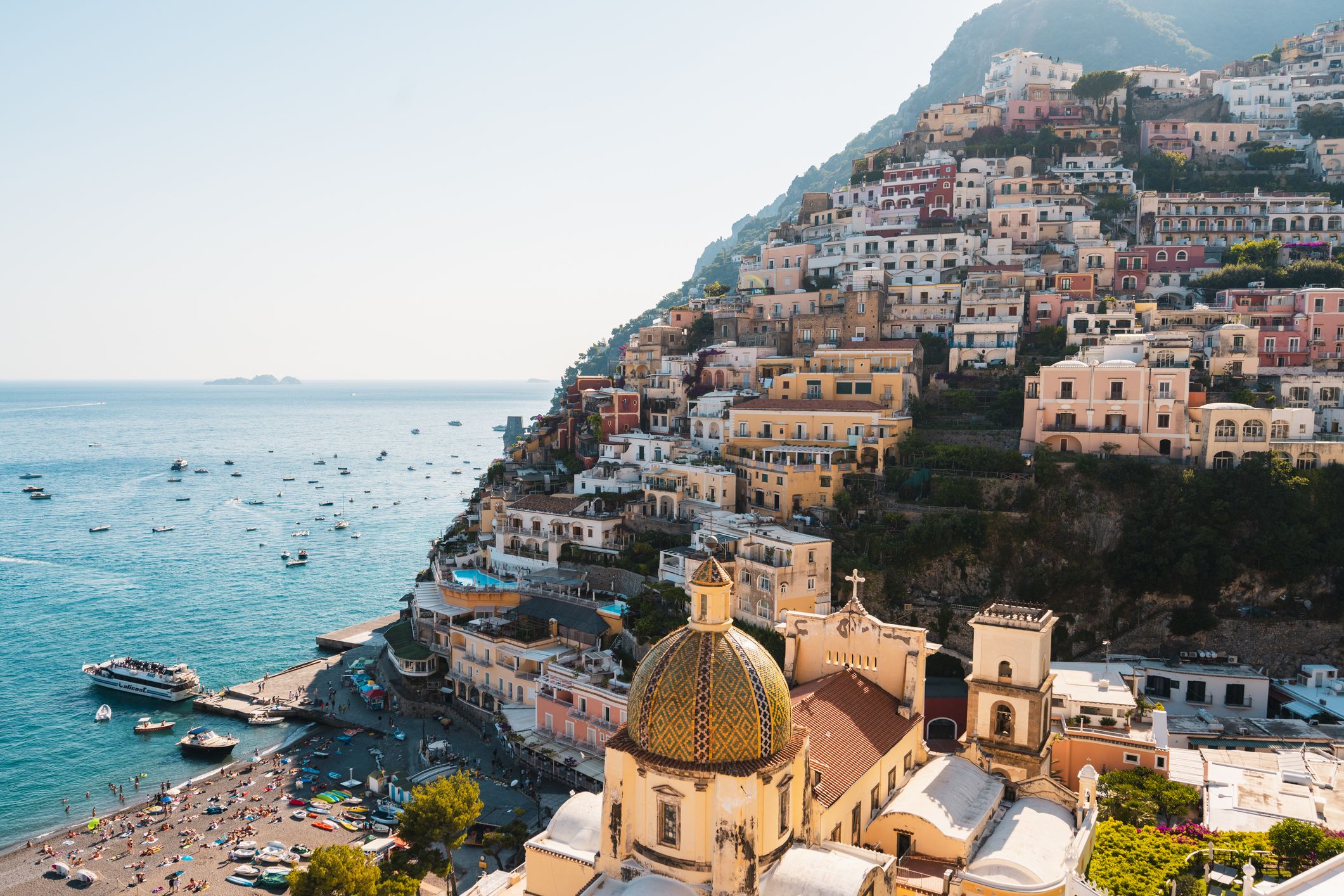
Triumph of Italian wines
Why do you write about Italian wines? is a question I get asked a lot. The solutions are straightforward:
1. Italy produces wines that are palate pleasers at value prices
2. Through its marketing efforts, Italy has carved out a huge swath of space in wine shops and consumer’s wine purchases/ collections
3. There are abundant opportunities for the wine trade, wine educators and wine writers to “do face” with Italian wines and wine makers
The Italian Wine Scene
Wine is produced everywhere in Italy making it the world’s largest producer. Over 702,000 hectares (1, 730,000 acres) of vines are under cultivation and offer (2013-2017) and annual average of 48,3 million HL of wine. In 2018, Italy accounted for 19 percent of global wine products, beating France (17 percent) and Spain (15 percent).
The Veneto region led production in 2020 producing enough wine to generate 543 Euros worth of exports. Most of the wine produced in Italy is sent to the United States, Germany, and the United Kingdom. Italy is the second largest provider of wines to the United Kingdom and received almost 646 million British pounds worth of wine from this Mediterranean country in 2021.
The wine industry has played an important role in Italy’s overall economic development. The sector currently employees more than 1.3 million people (directly and indirectly), and the number is constantly increasing as the sector grows. The enlarged wine industry – including tourism, manufacturing, processing and marketing, posted a Euro 10.6 billion turnover in 2017, with a 5 percent increase year on year.
Regions
There are over 20 different wine growing regions in Italy and more than 2000 wine brands. Piedmont, Tuscany and Veneto are the three major wine producing regions.
1. Piedmont. More advanced than other regions
Located in the Alps, the area is covered with hills and delivers frosty winters. To the East of the Piedmont region lies the coastal Apennine Mountains, separating Piedmont from Liguria and the Mediterranean Sea. The Alps and Apennine mountains create a favorable climate for grape growing.
Looking for a warmer climate? The Po River valley in the Southeast is the place for making wines from Nebbiolo (Italian native grapes) and famous for Barolo, Gattinara, and Barbaresco. Piedmont produces Moscato d’Asti – a delicious white sparkling wine, and Vermouth.
2. Tuscany
This wine region has the most Denominazione di Origine Controllata Garantita (DOCG) bottles in Italy. The DOCG designation is the Italian system for identifying wine regions and wine names. Wines with a DOCG label are submitted to tougher requirements than those labeled D.O.C. (Denominazione di Origine Controllata), including tasting approval. The main grape is Sangiovese. The region is divided into smaller production areas with the most important:
Brunello di Montalcino
Famous for 100 percent Sangiovese Brunello grapes where the quality is good, but the quantity is limited. In 1980 Brunello di Montalcino was one of four wines awarded the first DOCG title hence the price is high. The wine reveals sweet notes of dried figs, candied cherries, hazelnuts and toasted leather. Tannins turn into chocolate and deliver luscious acidity.
Chianti
80 percent Sangiovese grapes are used and sometimes Canaiolo Nero grapes (produces a red wine) and Colorino are included and up to a maximum of 10 percent white grapes (Malvasia and Trebbiano). Other grape varieties cannot exceed more than 15 percent and may include Cabernet Sauvignon, Merlot, and Syrah.
Chianti Classico
The wines must include 75-100 percent Sangiovese grapes and/or Canaiolo (up to 10 percent). Trebbiano, and Malvasia (up to 6 percent). Other grape varieties are permitted but not more than 15 percent.
Vino Nobile di Montepulciano
Vino Nobile is made from Prugnolo Gentile grapes (a cloned variety from Sangiovese grapes) and referred to as Sangiovese Grosso, plus a few other varieties. Super Tuscany wines are wines of excellent quality that do not follow traditional rules. All bottles are IGT class and highly regarded by wine connoisseurs.
3. Veneto
The Veneto region is the second largest producer of wine in the country after Apulia, with a far superior quality. Each wine is made from different grape varieties leading to diversified taste experiences:
Soave. White wine from 70 percent Garganega grapes, the rest is Chardonnay, Pinot or Trebbiano grapes. Dominant tastes of Soave vary from lemon peel, sweet Honey Dew melon, salt, green cashews and coriander.
Valpolicella
Red wine from Corvina, Molinara, Rondinella grape varieties and present a light body that is best served chilled. This wine shares the characteristics of Beaujolais and noted for its cherry flavor.
Bardolino
This Venetian red wine holds a DOC certification and the Superiore (a longer aged wine) holds a DOCG status (2001). Grape varieties include the Corvina vine (35-65 percent) and Rondinella Classica of Veneto (10-40 percent). Other grapes used in smaller percentages include Molinar (10 -20 percent) and Negara (maximum of 10 percent). The wine is produced along the chain of morainic hills to the east of Lake Garda.
The Event
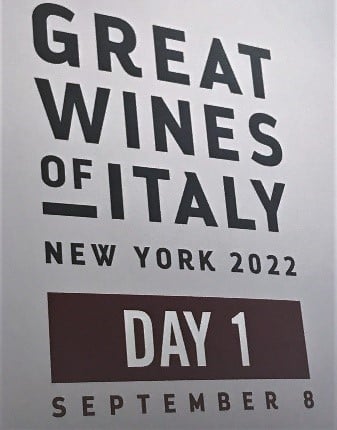
A dominant figure in the Italian wine space is James Suckling who organizes and produces humongous wine events in NYC, Miami, and other major international locales. In Manhattan, Suckling recently presented over 220 wines a day (for two days) showcasing wines that achieved a 92-100 score.
My Personal Opinion
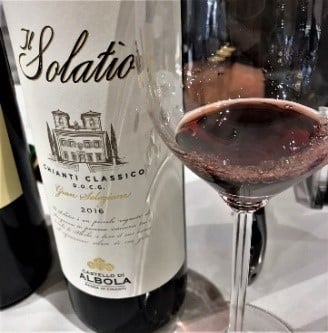
1. 2016 Castello di Alboa Il Solatio DOCG. Chianti Classico
Chianti has an Italian heritage that dates back 3 centuries. It is important to note that there is a difference between Chianti and Chianti Classico.
a. Chianti Classico
– Wine must include at minimum of 80 percent Sangiovese grapes
– Only red grapes permitted
– Grapes can be grown only in Florence and Sienna provinces in specific locales
– Designation derived from the fact that it covers the original townships where Chianti was first produced historically (Castellina in Chianti, Radda in Chianti, Gaiole in Chianti – all in the province of Siena)
– Must be aged at least 10 months before being bottled
b. Chianti
– 70 percent must be Sangiovese grapes
– Up to 10 percent white grape varieties allowed
– Aged 3 months before bottling
– Chianti Superiore (a designation withing Chianti) aged for a minimum of 9 months
Notes
To the eye, a burnt sienna trending to black. The nose finds lots of sophisticated cherry tempered by spice, raspberry jam and violets plus blueberries. Soft and delicate on the palate it is balanced and elegant. The delicious finish (with hints of almonds) fortunately lingers long and is luscious. Serve in a large “Bordeaux” glass.
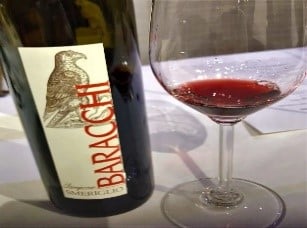
2. 2019 Baracchi Smeriglio Sangiovese DOC
Notes
Dark cherry red to burnt sienna to the eye, presenting aromas of violets and cherry, aromas of blue and raspberries to reward the nose with additional hints of spice and balsamic adding to the smell appeal. Light but firm tannins are apparent but do not add much to the taste experience

3. Ca’Rome’ Maria di Brun Barbaresco DOCG Nebbiolo
Notes
Deep dark mahogany red to the eye. The nose finds lots of berry/ cherry aromas that are tempered by wet earth. The palate is rewarded with dark fruits, and tannins that are soft, smooth, and velvety. This wine is almost too perfect…looses authenticity in its softness.
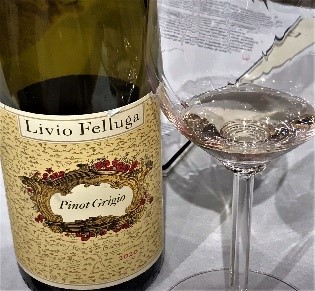
4. Livio Felluga Pinot Grigio Colli Orientali del Friuli 2020
Notes
The nose delivers florals (think jasmine, elderflower), yellow fruit (pears and peaches, apples and apricots) blended with minerality and citrus. Sweet and creamy on the palate tempered with spices. Long, lingering finish is soft and sweet – barely misses an artisanal authentic touch for greatness.



© Dr. Elinor Garely. This copyright article, including photos, may not be reproduced without written permission from the author.
